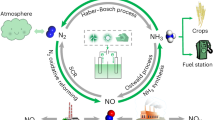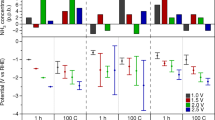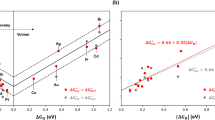Abstract
THE synthesis of nitric oxide from its elements by means of an electric discharge has long been recognised as highly anomalous, since the data upon the reaction N2 + O2 2NO – 43.2 kcal. indicate that if the discharge be regarded simply as a zone of exceedingly high temperature, the maximum yield of product should be obtained by the passage of an equimolecular mixture, followed by the most rapid cooling to c. 1,000° C., and independently of the pressure of the gas. In practice, however, the best results are obtained with slow circulation at c. 100 mm., a mixture of one part of nitrogen and four parts of oxygen being nearly as effective as the other. It has therefore been supposed that, apart from possible errors in the calculations due to extended extrapolation, the reaction is primarily electrical and incapable of simple thermodynamic interpretation, although conditions of experiment may in some cases permit of the superposition of a thermal process so strong that predictions are fulfilled.
This is a preview of subscription content, access via your institution
Access options
Subscribe to this journal
Receive 51 print issues and online access
$199.00 per year
only $3.90 per issue
Buy this article
- Purchase on Springer Link
- Instant access to full article PDF
Prices may be subject to local taxes which are calculated during checkout
Similar content being viewed by others
References
Proc. Roy. soc., A, 152, 158 (1935).
Author information
Authors and Affiliations
Rights and permissions
About this article
Cite this article
WILLEY, J. Electrical Synthesis of Nitric Oxide. Nature 137, 274–275 (1936). https://doi.org/10.1038/137274a0
Published:
Issue Date:
DOI: https://doi.org/10.1038/137274a0
Comments
By submitting a comment you agree to abide by our Terms and Community Guidelines. If you find something abusive or that does not comply with our terms or guidelines please flag it as inappropriate.



